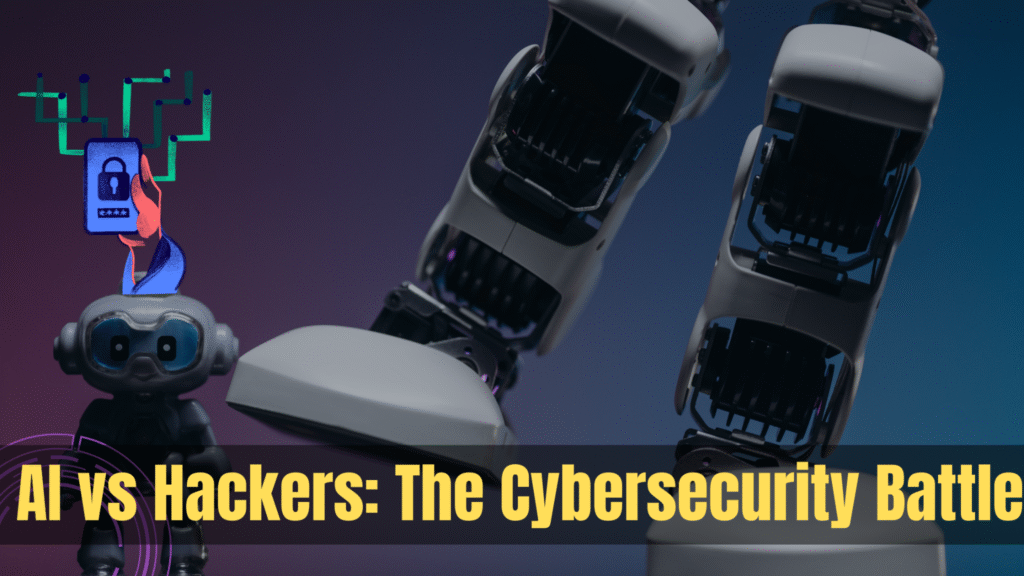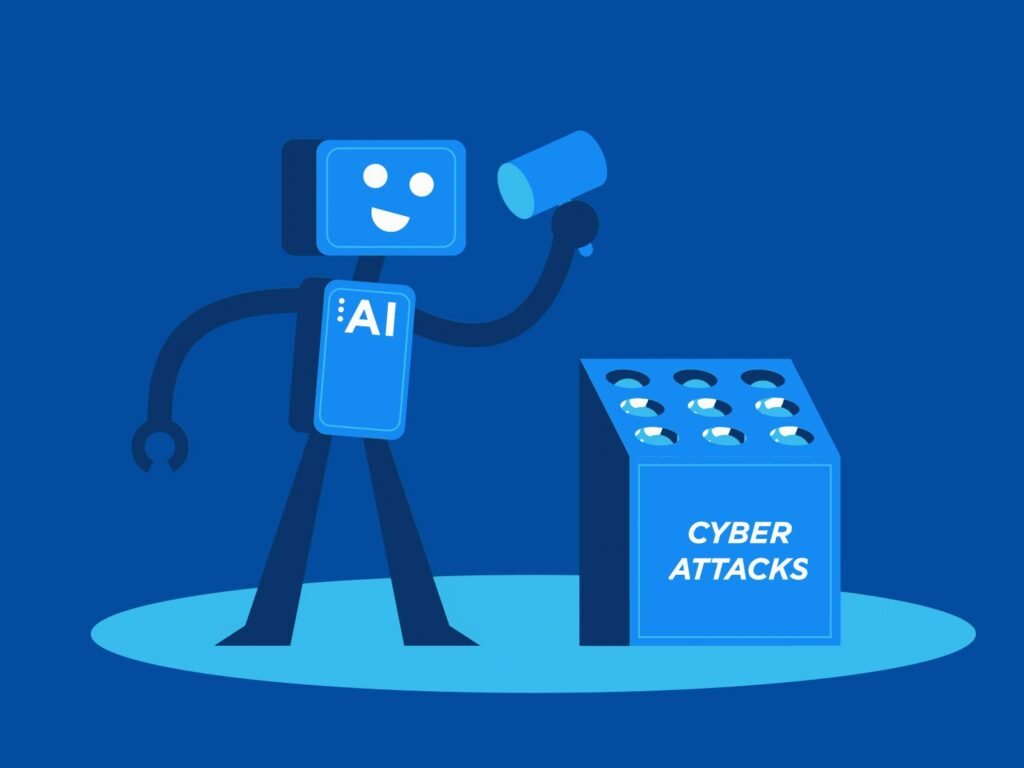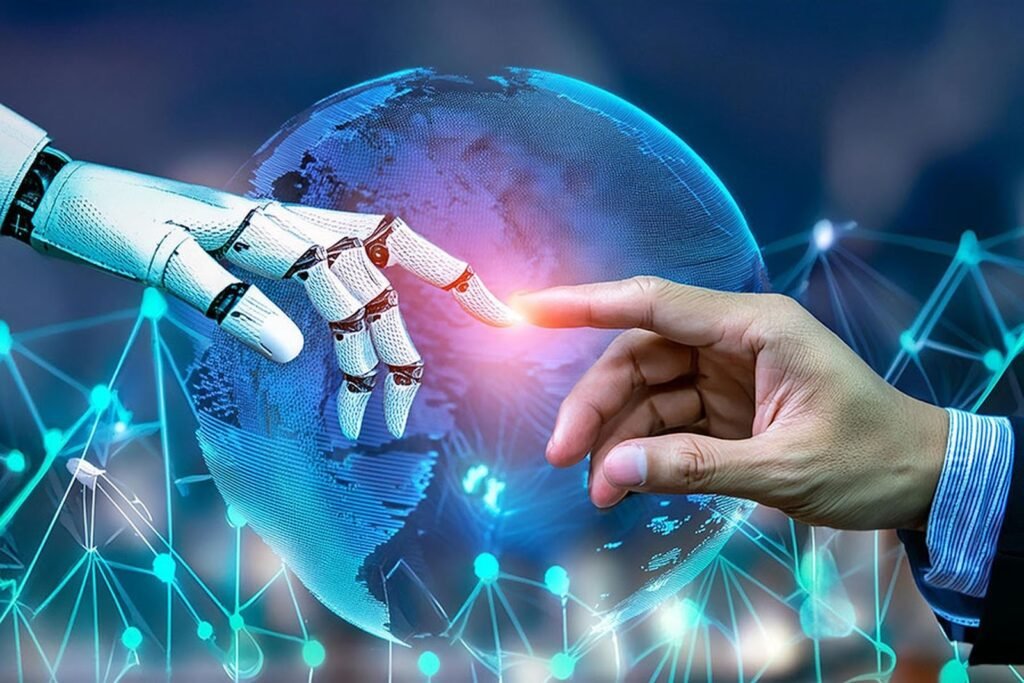AI and cybersecurity have reached a critical turning point in 2026. Artificial Intelligence is not only a subdomain tool anymore; it has become the pillar of contemporary cyber-defense strategies. With cyber-threats escalating in severity, AI in cybersecurity is imperative to quickly spot, analyze, and respond to threats. As hackers are also using AI to craft increasingly sophisticated attacks, the threat environment around the world is becoming an AI-driven battlefield where offence and defense are being driven by intelligent systems.

The only question business is now facing is no longer whether to use AI, but how fast they can do it to remain secure. This blog talks about how AI is shaping the field of cybersecurity in 2026, the new threats this is bringing, and how it’s transforming the manner in which we’re protecting ourselves against online threats.
- The Role of AI in Modern Cybersecurity
- AI-Powered Cyber Threats Emerging by 2026
- How AI Strengthens Cyber Defense in 2026
- The Human-AI Collaboration in Cybersecurity
- Challenges and Ethical Issues
- The Future of AI in Cybersecurity: 2026 and Beyond
- Conclusion
- FAQs
The Role of AI in Modern Cybersecurity
Artificial Intelligence is also critical in supporting the cyber-defense systems of the day. With billions of data being generated every second, no human analyst would be able to identify all the anomalies and prospective threats. AI-driven cybersecurity makes it possible for systems to search millions of data, identify suspicious activities, and automate responses within seconds. The major applications of AI to cyber-defense are:
- Threat Detection: Machine-learning algorithms and AI track patterns of behavior in order to identify suspected intrusions.
- Predictive Analytics: AI predicts attack patterns from a historic perspective and enables organizations to prepare ahead of time.
- Automated Response: Smart systems can quarantine infected machines, block malware propagation and restore services automatically.
- User Behavior Analytics: AI identifies abnormal behavior like suspicious logins or access attempts.
With the overlap of AI, big data and automation, organizations are able to boost security layers, identify attacks in real-time and limit damage before it spreads.
AI-Powered Cyber Threats Emerging by 2026

As AI powers cybersecurity, it also gives wings to cyber-criminals. In the year 2026, there will be an increase in AI-powered cyber-attacks, wherein cyber-criminals employ advanced tools to breach systems with unmatched accuracy. Some examples of AI-powered threats:
- AI-Phishing Attacks: Malicious hackers use AI to create hyper-personalized phishing emails that mimic human-like communication patterns.
- Deepfake & Synthetic Identity Attacks: Deepfake videos/voices created by AI and synthetic identities are employed for fraud, impersonation and corporate espionage.
- Programmatic Malware Generation: AI-based tools develop self-evolving malware that learns how to evade conventional antivirus programs.
- Social Engineering using Generative AI: AI personalities and chatbots manipulate people into divulging sensitive information.
- Adversarial AI Attacks: Hackers tamper with AI models themselves by providing them with false information in order to raise false alarms or provide blind spots.
Briefly, AI versus AI has become the new norm of cyber-security, both attackers and defenders are using machine intelligence to outmaneuver one another.
How AI Strengthens Cyber Defense in 2026
To combat advanced attacks, organizations are adopting AI-driven cybersecurity tools that focus on proactive defense over reactive response. Key areas of importance:
1. Real-Time Threat Detection
AI-powered applications monitor billions of data points in real time to search for unusual behavior. Machine learning detects subtle variations from baseline behavior, preventing attacks before they occur.
2. Behavioral Analytics
AI is trained on normal user, device, and system behavior. If abnormal behavior is detected, like instantaneous data exfiltration or logon from a foreign IP address the system notices it and quarantines it.
3. Automated Incident Response
Once there’s a possible attack, AI will block the source, quarantine the threat and alert the security team, cutting response time from hours to minutes.
4. NLP & Threat Intelligence
Artificially intelligent Natural Language Processing (NLP) technology browses web forums, dark-web chat channels and communication logs to detect emerging threats or leaked information, alerting security teams beforehand.
5. Predictive Defense Models
AI employs predictive models to predict attack patterns. By analyzing past breach intelligence and attacker patterns, organizations can predict future threat risk and develop counter-measures well in advance.
The Human-AI Collaboration in Cybersecurity

Human abilities cannot be replaced despite higher levels of automation. AI augments cybersecurity but human intervention is required for results analysis, ethical decision-making and ensuring transparency. Ethical hackers, cybersecurity specialists and AI developers all have to collaborate to create systems not just smart but also responsible. Human instincts assist in verifying AI forecasts, avoiding false alarms and ensuring right incident response. The most secure firms in 2026 will be those that find the equilibrium between AI automated processes and human judgment.
Challenges and Ethical Issues
Although AI is becoming established in cybersecurity, it also has some challenges and ethical issues:
- Data Privacy: AI systems need enormous training data, typically in the form of sensitive user data. Bad management can cause privacy infringement and misuse of data.
- Algorithmic Bias: AI systems will misclassify or discriminate, for example, in tagging legitimate users as threats, if they are trained on biased data.
- Over-Dependence on Automation: Too much reliance on AI introduces decreased human alertness, with the introduction of new vulnerability.
- Regulation and Governance Challenges: Companies cannot build standardization and international governance of AI in cybersecurity.
Ethically, AI should be transparent, fair, constantly monitored and adequately governed so that it cannot cause unintended damage or be used maliciously.
The Future of AI in Cybersecurity: 2026 and Beyond
AI-based cybersecurity will be an autonomous system by 2026 that can predict, prevent and respond to threats in real-time. Trends to look out for in the future:
- Quantum AI Security: Absolutely unbreakable encryption and data protection on the go using AI and quantum computing.
- Self-Healing Networks: Networks that can automatically detect, isolate and repair vulnerabilities without the need for human intervention.
- AI-Governed Security Policies: AI-driven security systems that design dynamic security systems that adapt to organizational requirements and threat environments.
- Global AI Defense Networks: Global collaboration where AI systems exchange data between global sites to address global cybercrime.
When technology evolves, the challenge of cybersecurity will move from “detection and response” to “anticipation and neutralization”. The future defense will be smart, autonomous and predictive.
Conclusion
The future of AI in cybersecurity is a challenge and opportunity. Artificial Intelligence gives defenders the power of automation, velocity and precision but gives attackers new weapons to exploit the vulnerabilities. Where the difference lies is in the use of AI in a strategic and responsible way. Entering 2026, businesses, governments and individuals need to evolve to keep up with an AI-driven security environment that is constantly in motion.
Protecting the digital world in the future is not about reinforcing walls, but about making smarter systems. The best defense in the 2026 cyberwar will be held by those who are able to get a handle on AI before others do.
Related Link:
- Cyber-Security: Types, Threats & How to Stay Safe
- What Is Zero Trust Security? Complete Guide
- Understanding the Ethical Issues in Artificial Intelligence
- Top 10 Cybersecurity Companies
FAQs
How exactly does AI help prevent cyberattacks?
AI detects unusual activities, examines patterns and anticipates threats even before the attack occurs. It minimizes detection and response time through real-time analysis and automated response to reduce losses and downtime.
What are the main risks of implementing AI in cybersecurity?
While AI strengthens defenses, hackers can use AI to produce smart attacks. Some of the concerns raised involve concerns about privacy of data, bias in AI models and over-automation with little or no human intervention.